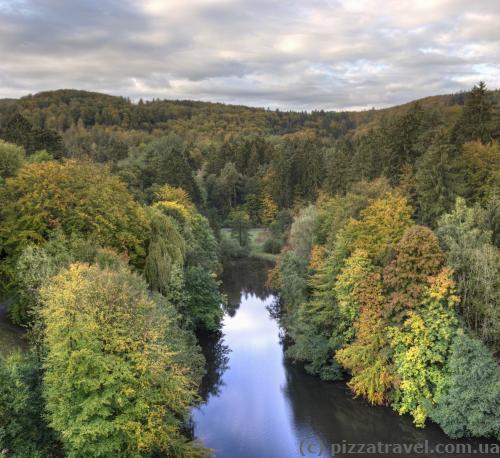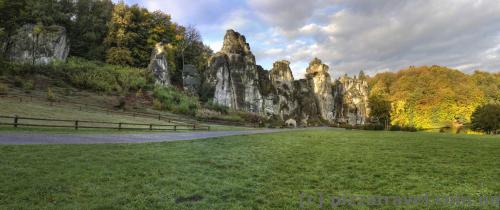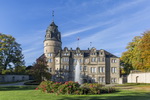Externsteine is called "German Stonehenge". It's a chain of sandstone cliffs in the Tevtonburg forest about one kilometer long and 70 million years old. The most interesting part is near the lake, where five 40-50-meter cliffs are located on the forest edge.
Archaeologists made excavations at the site and found some items aged 12,000 years. It is assumed that these cliffs held religious ceremonies of ancient Celts or Germans. But no one can know for sure. Documented history of the cliffs tells us that the "Third Reich" used this place for newcomers of SS and was looking for signs of "Aryan ancestors." Heinrich Himmler approved the use of the cliffs as one of the "holy places" of SS and allocated funds for research, which brought no sensations.
In XVIII century, Externsteine received particular scholarly attention. There was a theory that Herminsul, the Saxon pagan shrine, a symbol of the World Tree used to stand here. It is assumed that the wooden pillar dedicated to their god was destroyed in 722 by order of Charles the Great during Christianization of Germanic tribes.
There's a chamber at the top of the tallest cliff. There is some kind of altarstone that could be used for sacrifices. Directly above the altarstone a circular hole is cut into the wall, facing the direction of sunrise at the time of summer solstice.
Scientists believe that the cliffs are located on the intersection of earth energy flows and those who enter the altar feel a surge of positive energy, euphoria, warmth, and respiratory depression. While we have our own point of view regarding this phenomenon. Even for us, the young athletic people, it was difficult to go up a steep 40-meter staircase. In addition, the wind is stronger on the top. Therefore it's absolutely logical that after going into the niche each person feels warm and starts breathing slowly. Besides, it's a gorgeous place: the forest, the lake, the cliffs, so why should we feel negative energy?
On the most visible place is a bas-relief with a scene of removal of Jesus Christ from the cross. It dates back to 1150 and is one of the most important Roman era sculptures in Germany.
Getting there: By tourist bus #792 that cruises between Bad Pyrmont and Detmold. It pulls up to all tourist sites along the way, including Externsteine. Check out the schedule and map of its route here. You can reach the sight by regular buses from Detmold or other cities nearby; look for timetables on bahn.de or kvg-lippe.de. We arrived early in the morning to the Horn-Bad Meinberg train station and walked about 3 kilometers. There is a cash desk near the entrance, but since we got there early in the morning, nobody was there: neither employees nor tourists. You need a ticket only if you want to get on the top of the cliffs.





















